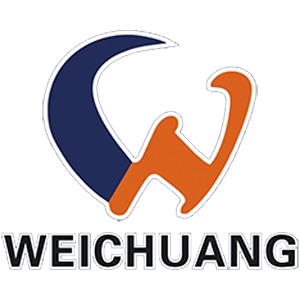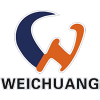Fiber optic cable contains thin glass fibers that carry information through light signals. It has become the most commonly used cable worldwide by internet and phone companies in recent decades. Fiber optic technology provides broadband connectivity and meets telecommunication needs for businesses and networks globally. These cables offer significantly higher throughput and reduced signal degradation versus copper wires, rendering them optimal for swift, high-capacity transmission over both extended and limited ranges.
(Copyright photo from https://www.freepik.com/free-photo/close-up-beautiful-optical-fiber-details_21140556.htm#fromView=search&page=1&position=4&uuid=66686dd6-2ac2-4855-834b-df31fc390a31)
Basic Components of Fiber Optic Cables
Fiber optic cables feature various internal structure components and additional protective layers. These include:
- Fiber
This component is made of thin strands of glass or plastic. It transmits data encoded as pulses of light. At its center is the core. It is surrounded by the cladding layer. This layer protects the internal reflection of light signals through the core.
- Strength Member
Strands of Kevlar or fiberglass act as the strength member in the fiber optic cable. Its purpose is to protect the interior fiber strands from stresses on the cable caused by pulling, twisting, or tension during installation or operation over the lifetime of the cable.
- Sheath
The outer sheath of a cable provides the final protective layer. It is constructed from durable materials like plastic or steel. Its role is to protect the inner contents from moisture, rodents, abrasions, or other environmental hazards both inside buildings and outdoors.
Types of Fiber Optic Cables
Optical fiber cables come in different varieties optimized for diverse networking needs and environments. Understanding the main types is essential for selecting the right cable solution.
- Categorized by Application
An optical fiber cable is designed for either indoor or outdoor use. Depending on its intended use and application, its design varies based on the strength and composition of the sheath materials. Indoor cables suit environments protected from the elements, while outdoor varieties withstand demanding exterior conditions.
Used inside buildings, these cables have a simple, thin sheath suitable for conditions like office spaces. Their sheath material like PVC offers structural integrity while maintaining flexibility for installation.
Featuring a reinforced sheath, outdoor cables can withstand moisture, chemicals, temperature fluctuations, and other punishing outdoor factors. Their sheath is constructed from rugged materials like polyethylene or armor for protection and durability.
- Categorized by Light Propagation Mode
Depending on factors like data rates, transmission speeds, and distances, a fiber optic cable propagates light in either single mode or multimode.
- Single Mode Fiber Optic Cable
Carrying signals through a small, single core, these support high speeds over extremely long ranges. They are used where the highest capacity over long-haul links is required.
- Multimode Fiber Optic Cable
Employing larger diameter cores that support multiple light modes, multimode optical fiber cable has a lower cost but a shorter transmission length. This type is ideal for LANs needing higher bandwidth.
Applications of Fiber Optic Cables
Optical fiber cable technology enables high-speed connectivity across an expansive range of industries and infrastructure. The top applications of optical fiber cable include (but are not limited to):
- Telecommunications Networks
Fiber backbones form the core infrastructure of telecom carriers worldwide, connecting cities, regions, and continents with vast underwater cables for telephone services and broadband internet.
- CATV Networks
Fiber optic cables deliver cable television services directly to homes and buildings, enabling wider channel offerings and higher-definition video.
- Enterprise Networks
Within corporate campuses, factories, and college universities, indoor/outdoor fiber connects major buildings for LANs, storage networking, and clustering vast compute resources.
- Military Facilities
Countries rely on secure fiber networks for functions like radar tracking, air traffic control, ship-to-shore communications, and encrypted data transmission between bases.
- Utility Infrastructure
Companies leveraging fiber include electric grids monitoring substations, smart metering rollouts, and other systems linking remote facilities.
- Transportation Systems
Rail, aircraft, and maritime vessels use fiber optic cable technology for control, navigation, and passenger connectivity needs.
Conclusion
Fiber optic cables have enabled the digital revolution through their unmatched bandwidth capacity and low signal loss. As network usages grow exponentially, fiber optics will remain an essential infrastructure enabling vast data transmission needs. The seasoned fiber optic cable manufacturer Weichuang Optics manufactures high-quality fiber cables for telecom backbones, enterprise deployments, and other industries. Our cables meet reliability standards for consistency in all environments. Browse our website to discover our robust, scalable fiber optic solutions for all connectivity needs.









